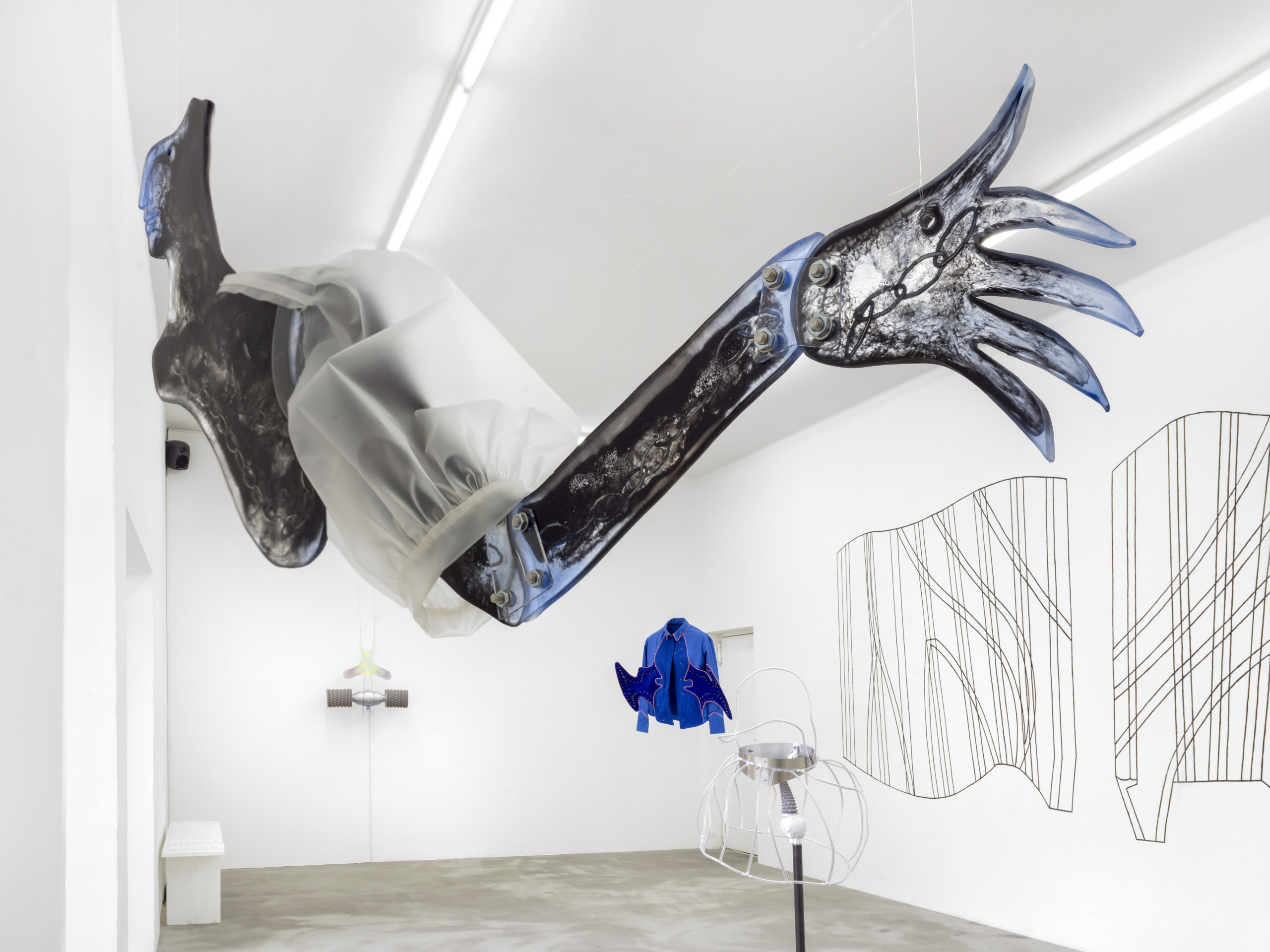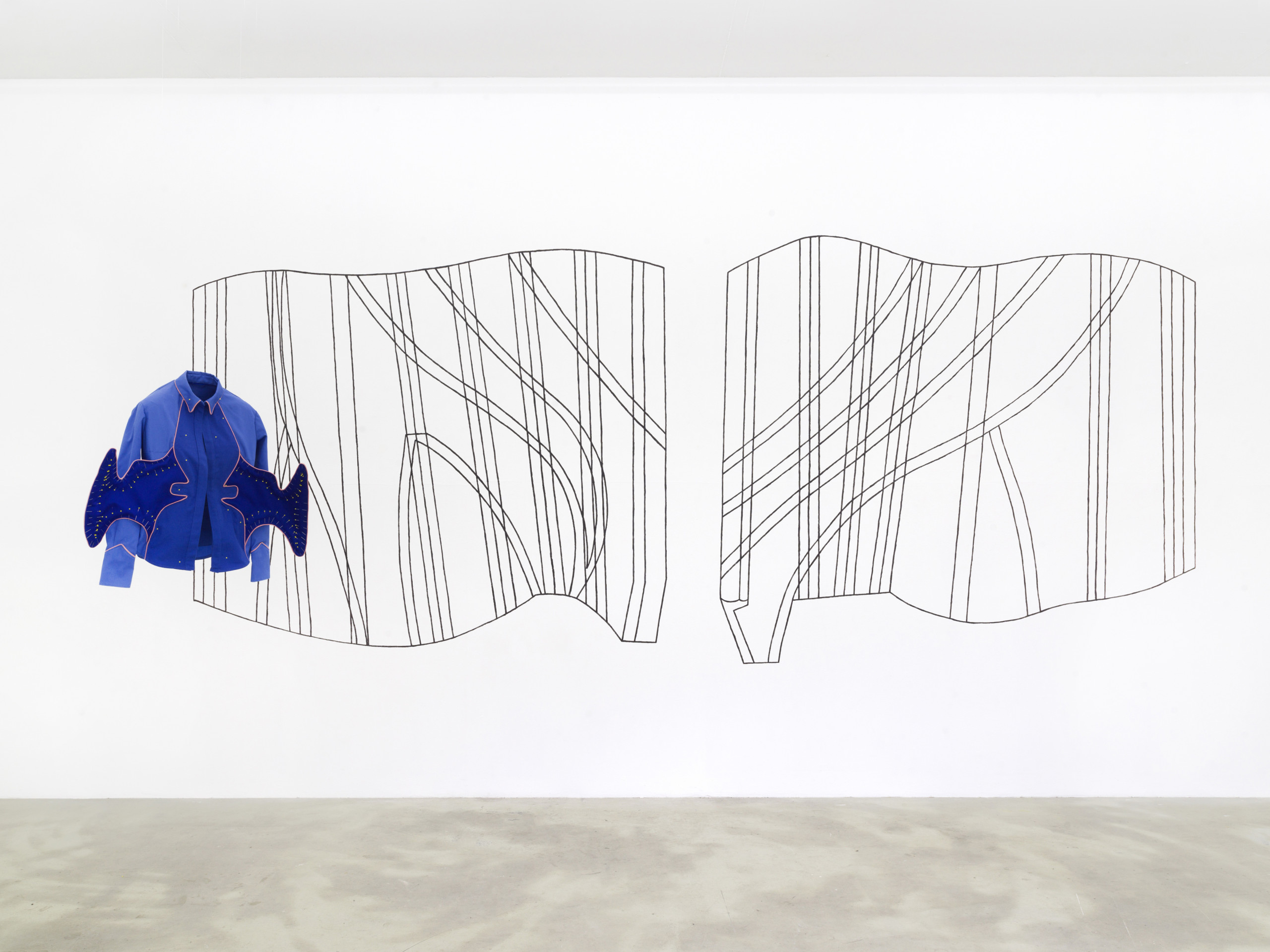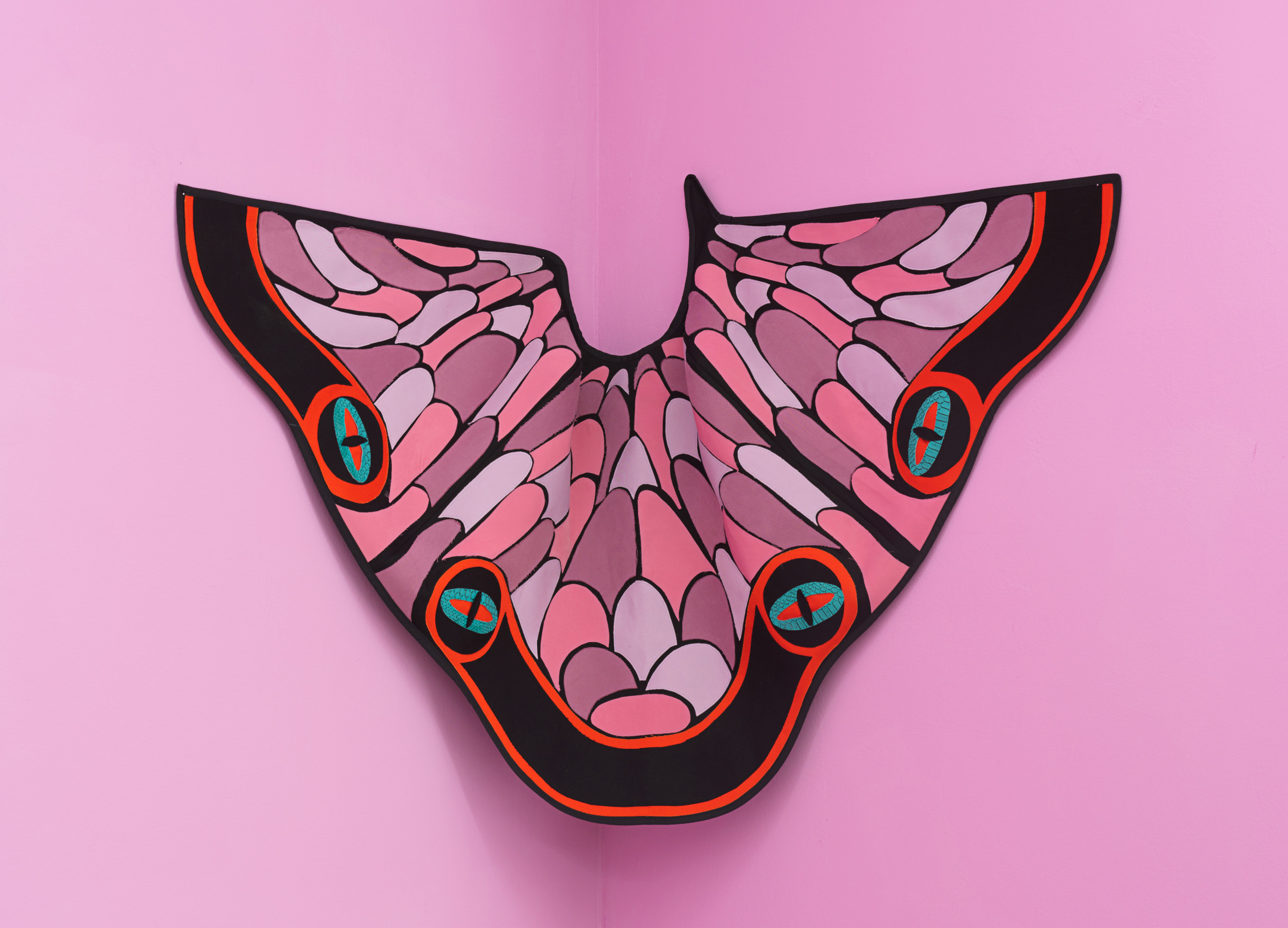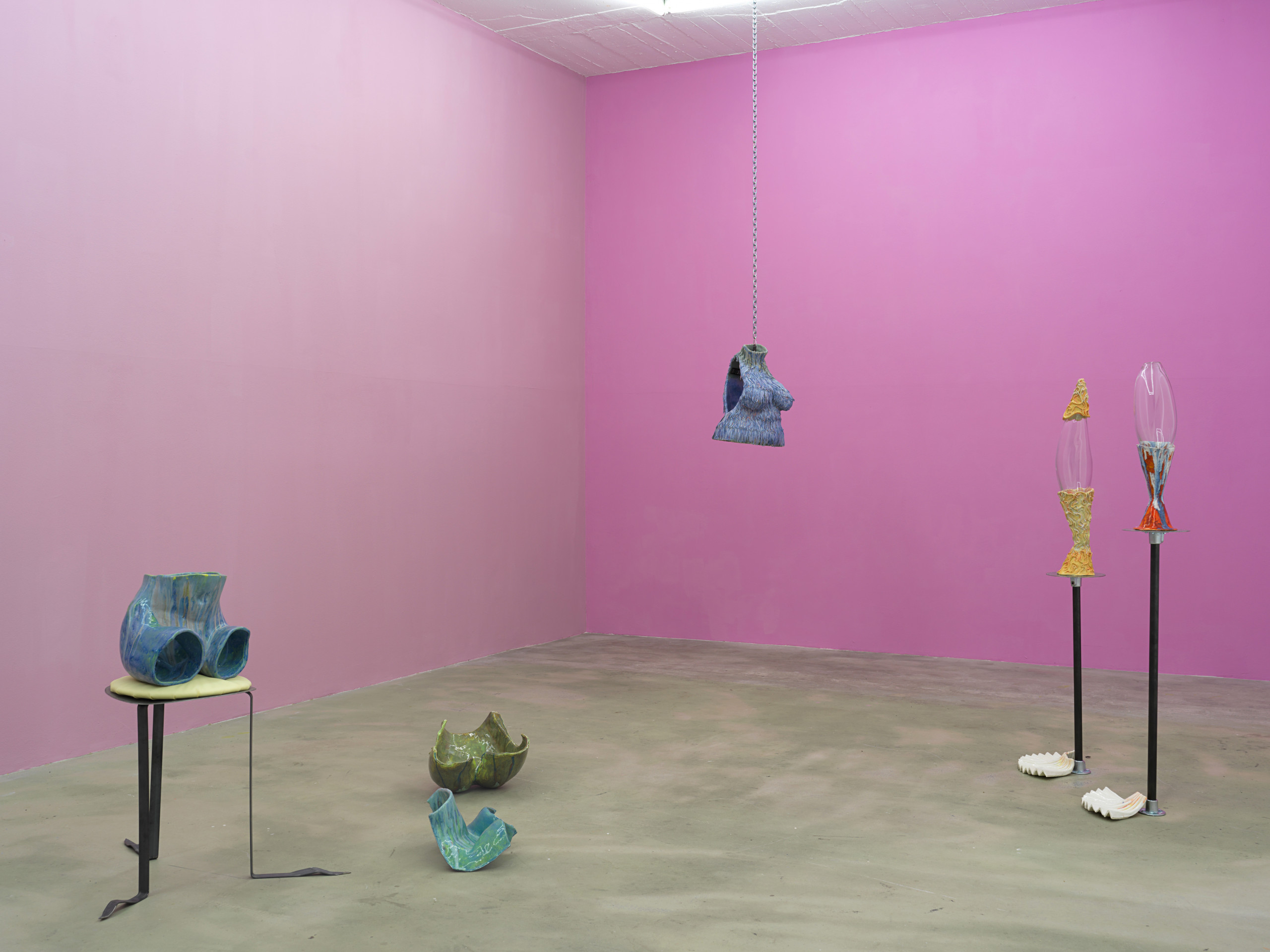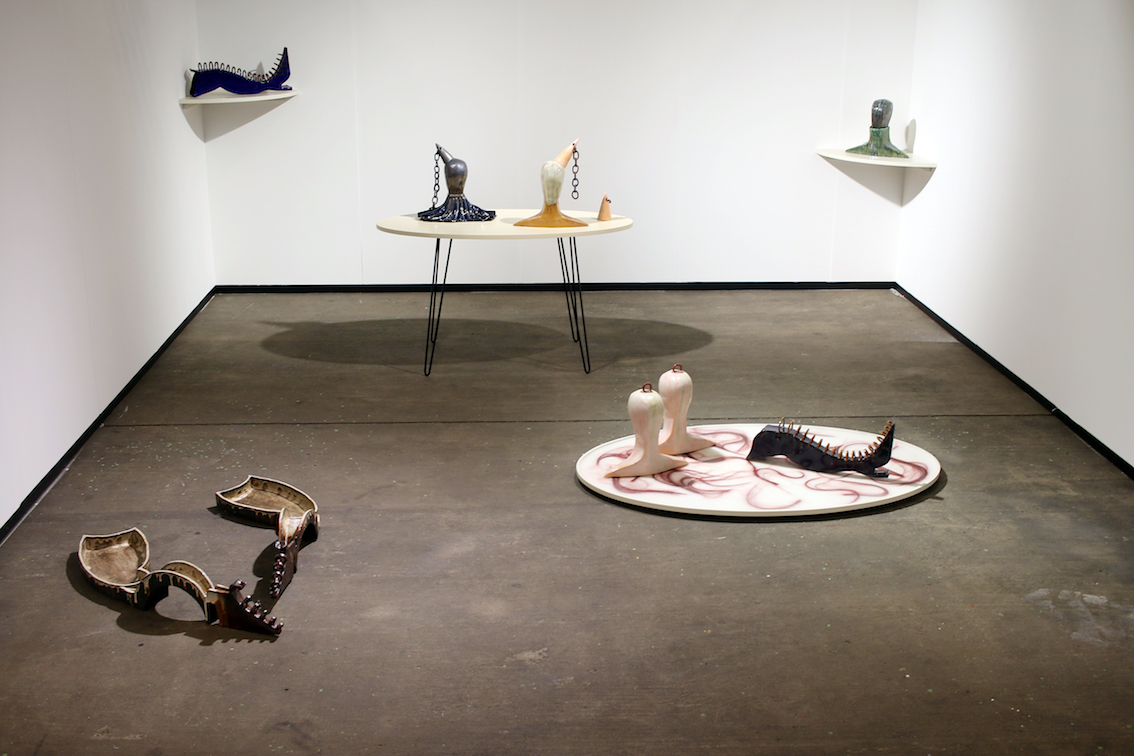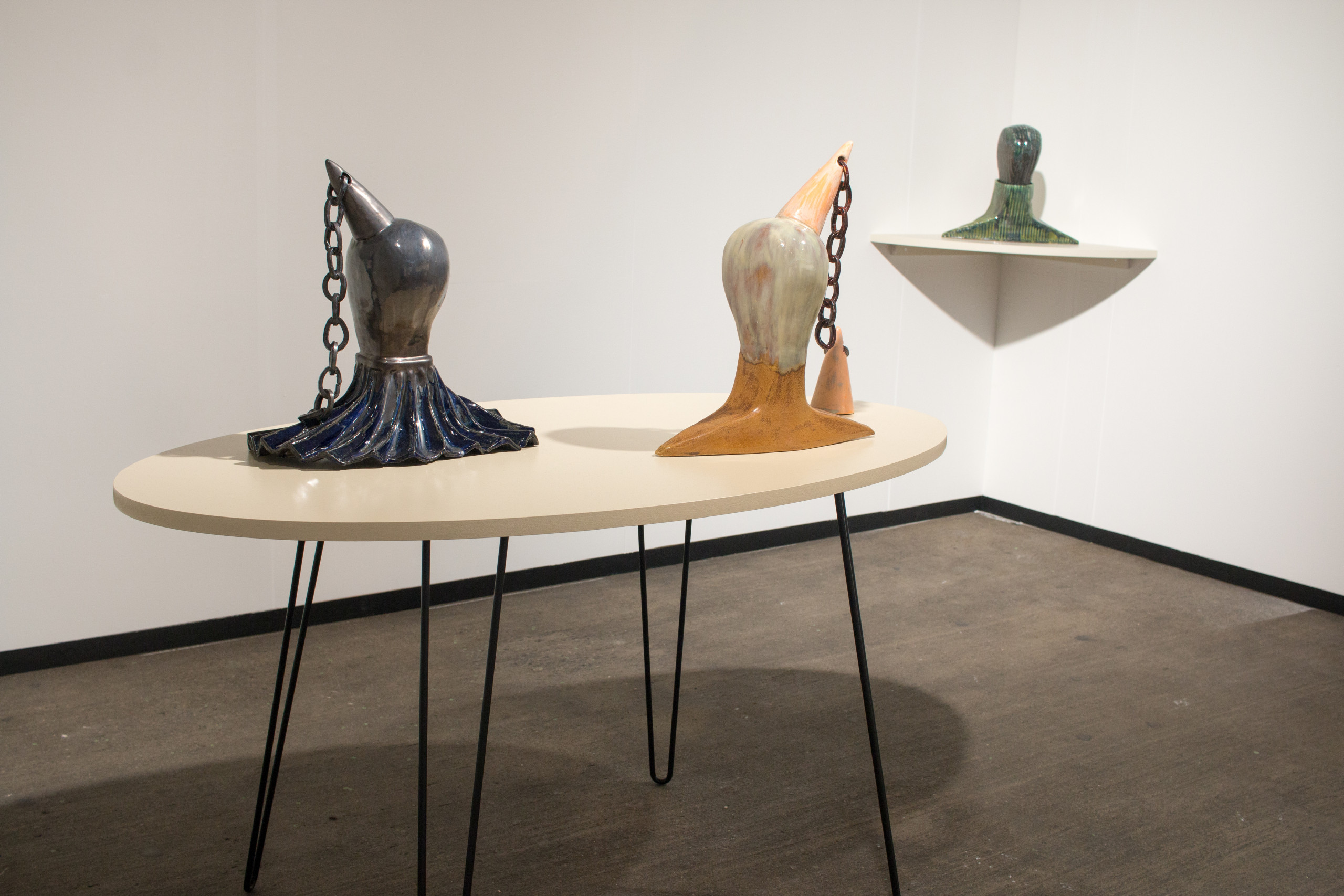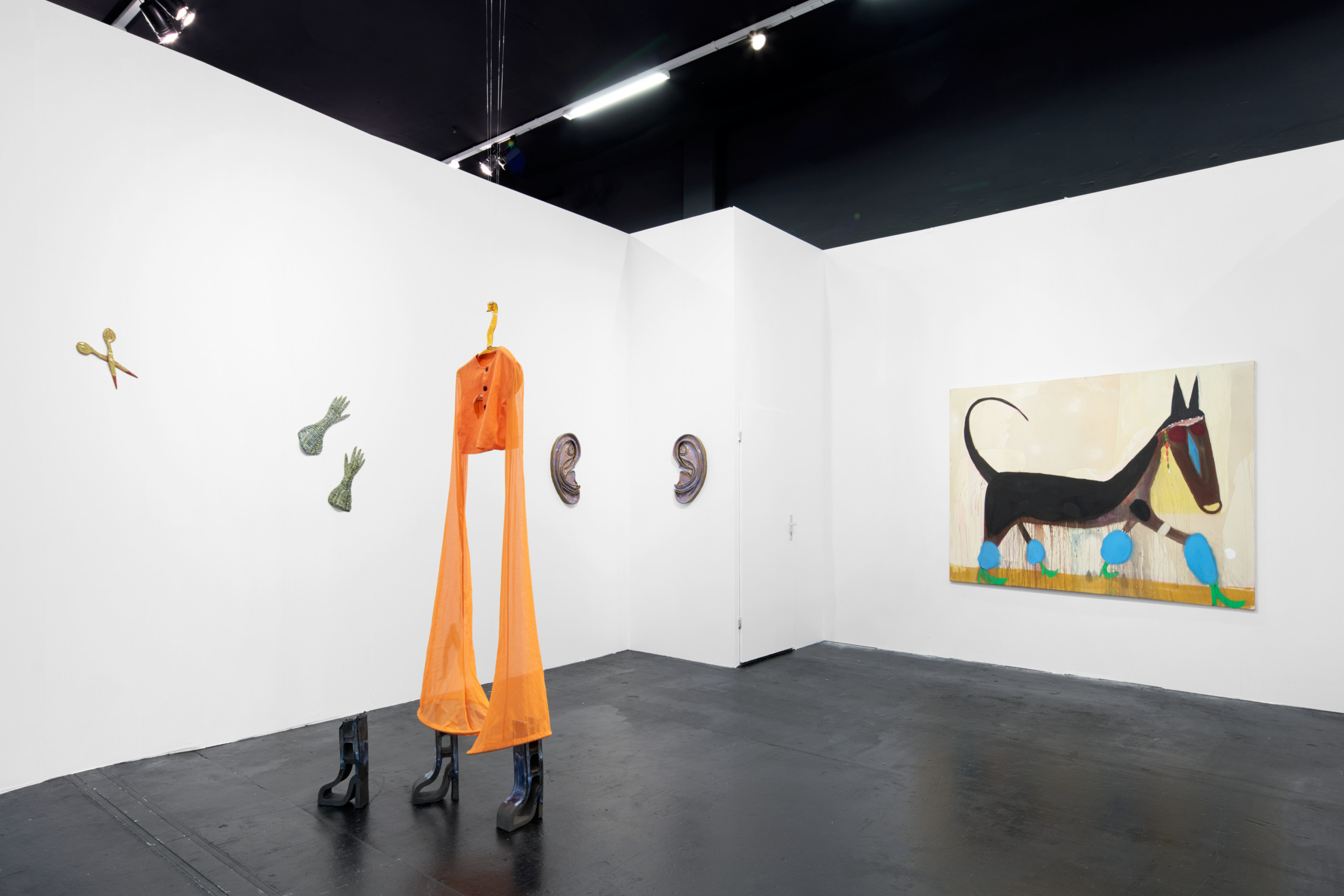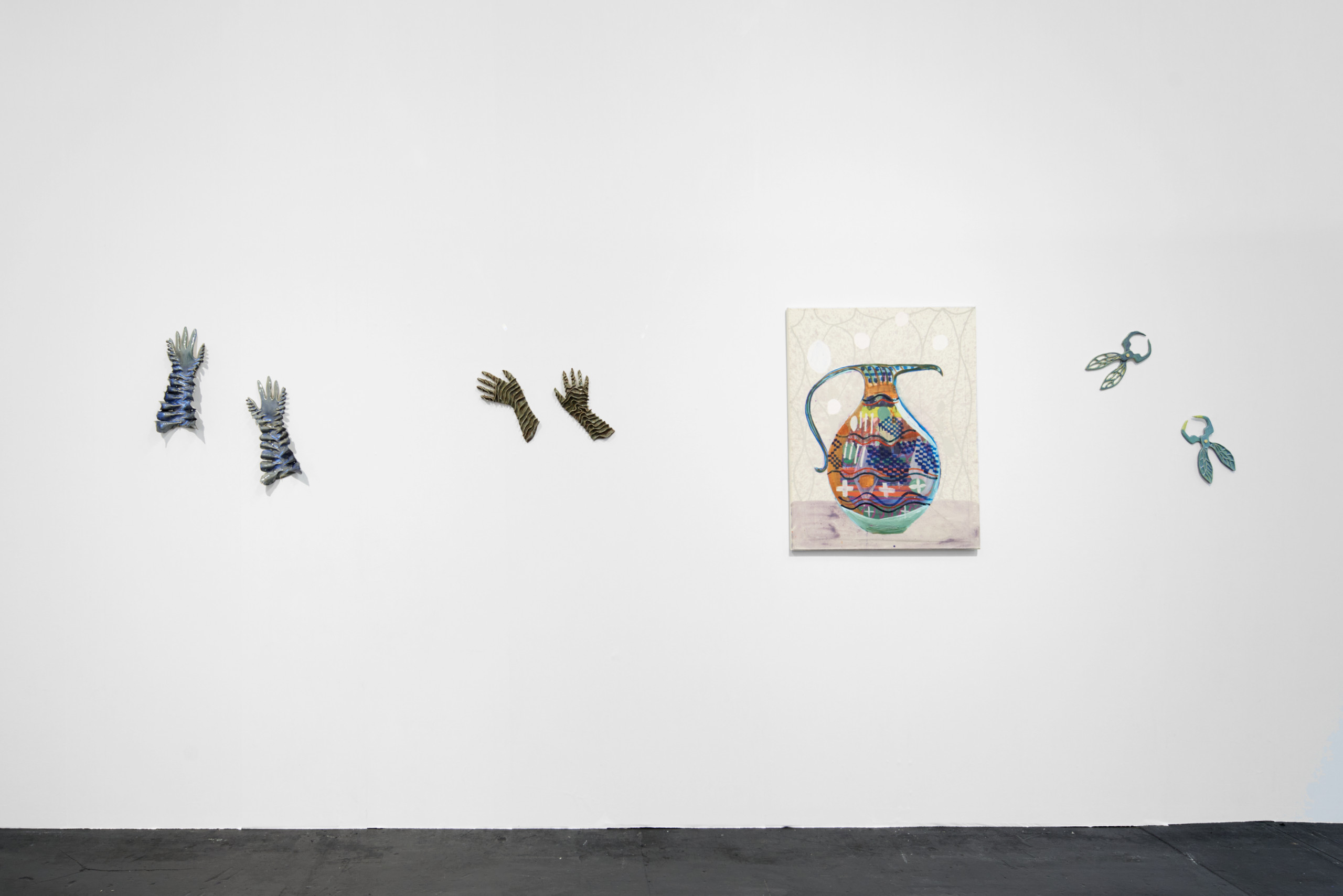Proudfoot & Piasecka (ft. Nima Séne, Ailie Ormston and William Darrell) • Ensemble • 14.04.–29.05.2021
Human voices fill the room and whisperingly scan the body from head to toe. Mechanical lungs elastically inflate and deflate in a visual rhythm, while the fluid contained in tubes becomes a continuous stream of hope – or desillusion?
Rattling soundscapes and disturbing frequencies merge into transcendental and celestial moments evoking after-wordly imageries. Then, abruptly emerging mechanical beats remind us of the sinister reality of illness – a place where pleasure and pain co-exist, moving from surrender to rage, from humour to desperation, always in need of relief. Illness leaves us in shifting states of hope, waiting for answers, while more questions remain. The mechanisms and systems appear stable but can we trust them? We feel strong then we collapse. There must be somewhere we can fly.
Floating in the in-between space of uncertainties, Proudfoot & Piasecka’s Ensemble addresses the artists’ personal proximities to fluctuating states of health. Building on their collaborative practice exploring the relationship between performance and sculpture, the installation comprises a series of clothes- sculptures presented on animatronic structures, mimicking internal bodily functions. The accompanying sound work draws on therapeutic ASMR, somatic movement practices and sampling techniques. In tandem with each other, the sculptures and sound work set the stage for a live performance but come to embody the performance themselves.
At once fascinated by how bodies continue to function through medical intervention and insertion of non-organic material, the multi-layered installation inherently critiques how medical concepts universalise bodies. Proudfoot & Piasecka play with this tension providing an alternative to the binary idea of health on one side and sickness on the other, embracing the imagery of the body-as-machine whilst simultaneously rejecting it.
Dress-making, dance and medical concepts are rooted in anatomy and hold preconceptions of what the body is. Clothes patterns and dance notations are based on ideal ratios, on perfect shapes. The intersecting lines of corset patterns presented on the exhibition walls appear like a dance score or arterial network.
Historically, both Western dance training and corsets curtailed disobedience and were deployed to bring the body into order, to train it into a desired shape. Both artistic disciplines, dance and clothes-making, traditionally carry an obsession with health, exercising and dieting in order to generate conformity to idealised body standards. Failing in this pursuit of ‘perfection’ continues to produce “the other”, or various “others”. Size numbers, ratios, scales are mathematical ways of looking at the body with only controlled consideration of deviation. Cutting patterns resemble dissection. Fixed pattern blocks, splitting the body into grids: Surgeons and dress-makers alike isolate body parts for inspection to get closer to understanding the body, closer to the promise of healing.
Proudfoot & Piasecka work against these fixed preconceptions and implement a sense of movement and flux, of stretching and bending. The bodily sculptures are translucent, suspended, almost ghost-like. The heart is a beating vessel, a muscle, held together by tissue allowing the rhythmic contraction. The elasticity of fascia tissue, contorts and ages like the weave of the fabrics that clothe us, adjusting to the pattern of our individual habits and gait. Like the worn thin armpits or stretched sleeves of a favourite jumper, the fascia flexes but also becomes rigid to the patterns of movement or anxious ticks.
Clothes can be seen as an extension of the body – as prostheses that constrain and obstruct, but also support and enable. Biotechnology and its visual representation, informed by sci-fi and ideas of the superhuman, is widely mediated as fearful and othering. Proudfoot & Piasecka playfully argue for humanising technologies that are human interventions after all.
While the human body is absent in the installation, Ensemble carries the full spectrum of human emotions, desires and vulnerability. It choreographically redirects the viewer’s attention to their own bodily state, providing moments to reflect on and notice sensations occurring in real time, allowing a somatic experience beyond the purely visual. In this new work, Proudfoot & Piasecka critically interrogate the relationship between audience member, performer and participant of conventional performance formats by activating the viewer’s body awareness. Considering their own shifting states of health and taking into account personal needs in the production of artistic work, Ensemble takes the pressure off a performing body or an audience perceiving the body. Understanding performance as a sensibility, as a choreographic wheel towards a way of being beyond a live performance, Ensemble offers a new direction to rethink notions of performativity.
Text by Nora-Swantje Almes
This exhibition is kindly supported by Stiftung Kunstfonds & Neustart Kultur.

This exhibition is kindly supported by Stiftung Kunstfonds & Neustart Kultur.
Press
Video
Proudfoot & Piesecka • 'ENSEMBLE' • video walkthrough
